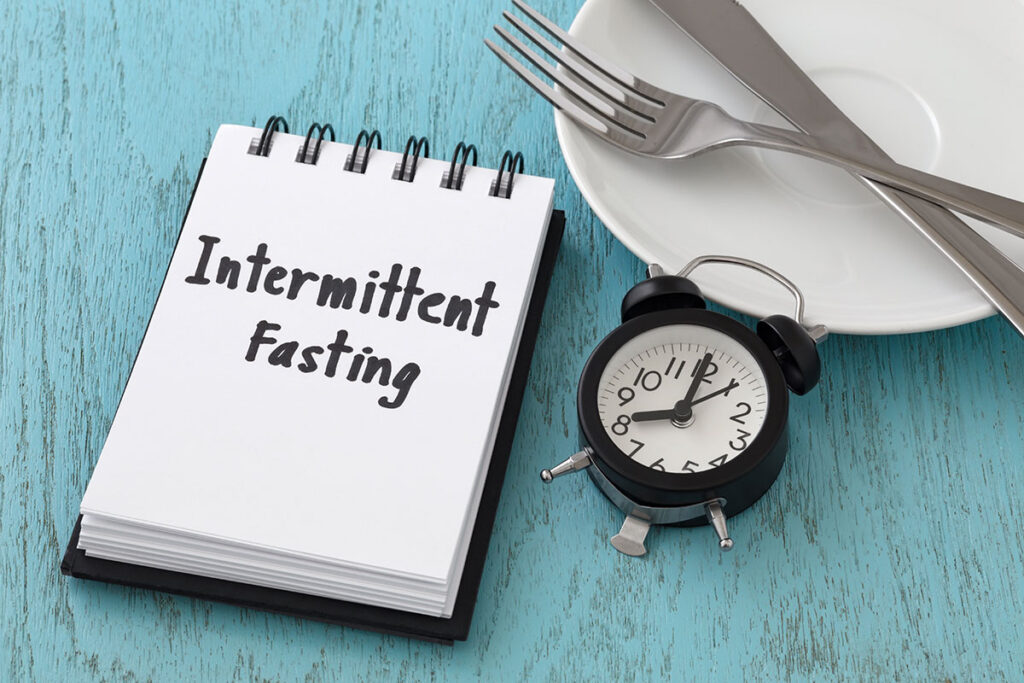
There are several varieties of Intermittent Fasting (IF). But which one works best for weight loss? Well, that’s completely unique to each individual. There are many popular ways of fasting that are one day or less.
- the 5:2 diet – 500 to 600 calories a day on two non-consecutive days a week.
- One meal a day (OMAD)
- 16:8 – eating in an eight-hour window each day (my favourite). I choose between 1 pm and 8 pm.
Why is Intermittent Fasting Important?
The concept of fasting has become increasingly popular.
We know it’s good for us. But why?
The answer is quite simple and well worth knowing. After all, depriving ourselves of something we like (food) is much easier if we know why. So, here it is in a nutshell.
Intermittent Fasting and the Low-Carb Diet
First, prepare yourself for fasting with a low-carb diet. Fat and protein are satiating. Sugar and carbs lead to rebound hunger within two hours or so.
I was amazed when I first learned that the five litres of blood in our whole circulation carries just one teaspoon of sugar before we eat each day.
The primary function of insulin is to return the raised blood sugar to one teaspoon after a meal. That might take 4 or 5 hours after a standard meal but less so after a low-carb meal.
Becoming a Fat Burning Machine
How does intermittent fasting work for weight loss?
Once the meal is packed away, and the blood sugar has stabilised at around one teaspoon, insulin switches off, and the body commences burning fat. We continue to be a fat-burning machine until we eat more sugar or carbs that convert to sugar.
Repair Day
My preferred name for intermittent fasting is ‘Repair Day’. Fasting sounds negative, while repair sounds positive.
There are several ways to fast intermittently. 16:8 is probably the most popular and works very well with a low-carb diet where we tend to be much less hungry. I generally eat in an 8-hour window between 1 pm and 8 pm. A few hours later, metabolism switches from feeding to fasting. Thus, going from storing food to burning fat.
Fat burning naturally assists weight control, but intermittent fasting has a more critical role. The body needs to repair damaged cells and replace those that have reached the end of their life. A red cell, for example, only lives about three months. We need to be in the fasting state before repair and replacement can occur.
The body consists of trillions of cells in constant need of repair. They start to wear out soon after they are created. A red blood cell, for example, only lives for about 3 months. It then breaks down and is replaced by a new cell. Other cells, destined to last longer, contain elements that wear out long before the cell as a whole. The mitochondria, powerhouses within the cell, have to be replaced regularly throughout the cell’s life. Each liver cell contains about 2,000 mitochondria.
Apoptosis and Autophagy
Apoptosis is the process of removing a cell that has reached the end of its life. Autophagy refers to the repair process within the cell.
No need to concern yourselves with the names, but do remember this: autophagy and apoptosis only occur while we are fasting – insulin, responding to sugar, switches off these vital processes.
The body self-repairs damaged brain cells, removes early cancer cells, and keeps all the cells healthy and disease-free.
My weight has been stable since 2014, but I continue with intermittent fasting to keep my body in good repair.
Read more about intermittent fasting in our Beginner’s Guide blog post which breaks down all the options and how they work.
